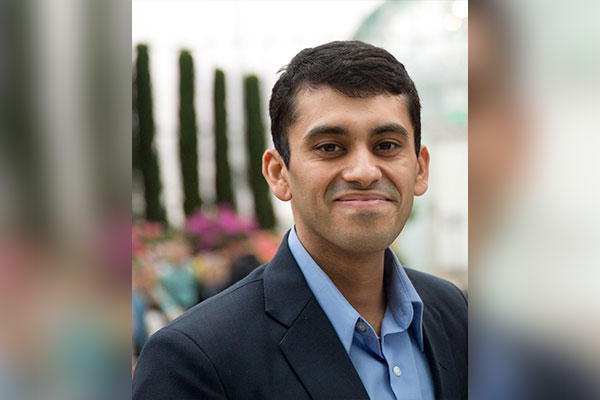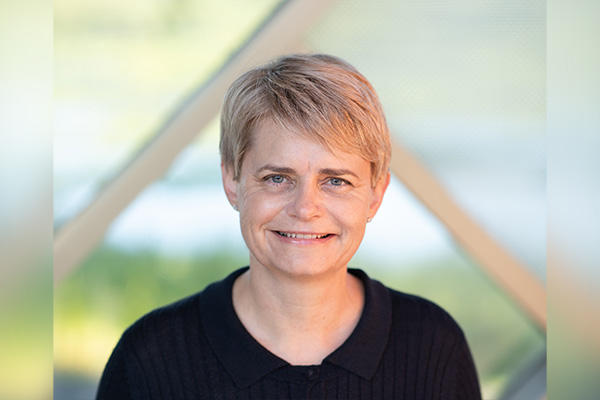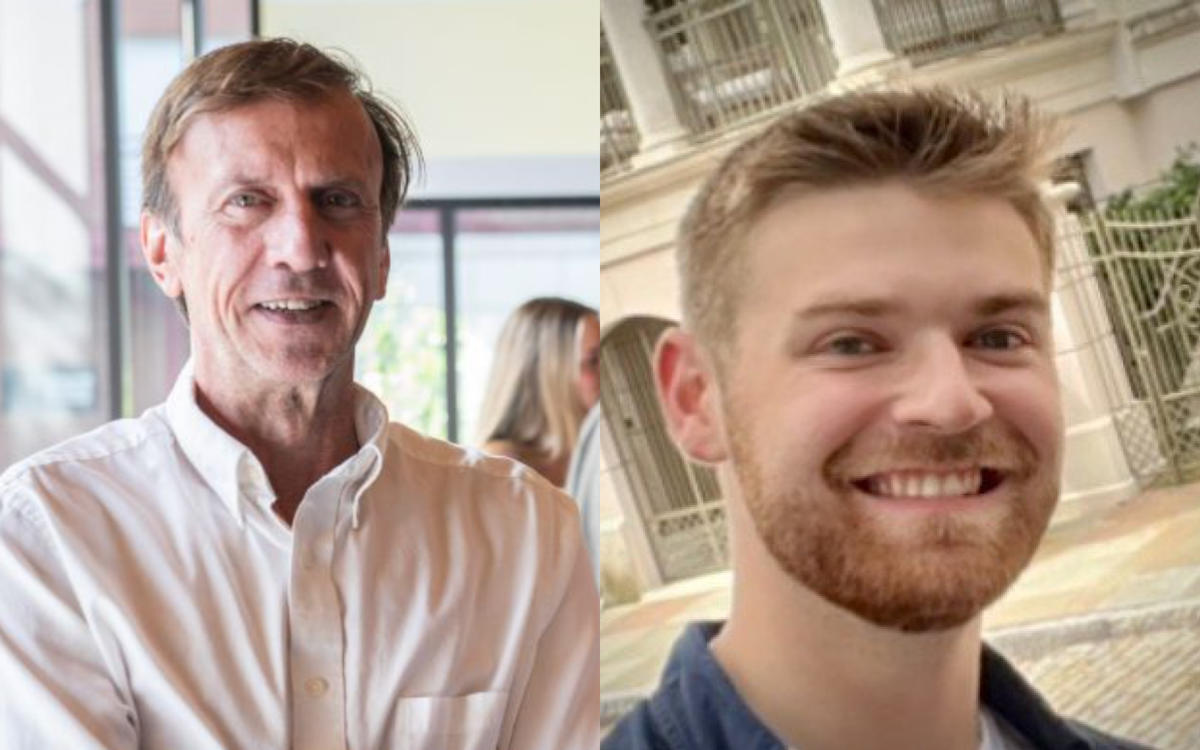Close to Home
November 28, 2017

University of Minnesota pharmacists are mobilizing communities to fight the opioid epidemic in Northern Minnesota
MINNEAPOLIS — Christmas Eve 2014 was Nicole Metcalf’s low point. She had just been arrested for possessing and selling meth. Her addiction to the drug was all consuming. Meanwhile, relatives were seeking custody of her children who were also struggling with their own mental health and addiction problems.
“My family had washed their hands of me. I was so broken,” said Metcalf, a resident of Thomson, Minn. She remembers meeting with her probation officer, waiting for the worst and finding compassion. “He said: ‘I believe in you Nicole.’ He didn’t even know me, but he believed in me.”
Rather than prison time, Metcalf entered into Carlton County Drug Court, a high-accountability program centered around long-term treatment and setting individualized goals to live a healthier life.
Drug courts have been put in the national spotlight recently after the White House’s national opioid commission recommended states increase their use. The focus on treatment rather than punishment is aimed at breaking the addiction cycle. For Metcalf, it worked. With help from coaches, she got sober, entered treatment, mended relationships with family and graduated the program in 2016.
“I still have a lot of work today to continue to think correctly and make good decisions,” Metcalf said. “That can be hard even when you’re not struggling from addiction, right? But I’m grateful. I’m very grateful.”
Driven to End Addiction
Laura Palombi, Pharm.D., M.P.H., assistant professor at the University of Minnesota College of Pharmacy, Duluth campus, visits the Carlton County Drug Court every week. She’s been working with drug court since 2014 and it’s one of her primary areas of focus as she works to find answers to the opioid crisis. Palombi has worked with Metcalf and many others, working to find a path to overcome addiction.
“My job is to support them, and open doors for them,” Palombi said. “It’s remarkable to see how our Drug Court participants have transformed their lives.”
The data shows drug court makes a difference. An article Palombi published cites several positive outcomes. Drug Court has been shown to be cost-effective and linked to reduced recidivism. A 2012 report from the State Court Administrator’s Office (PDF) cited that drug offenders who went through the program had a much lower long-term rate of re-conviction than the comparison group.
Even as Drug Court was showing success, Palombi noticed a disturbing trend in her community. Opioid abuse was popping up again and again. It increased to massive proportions – dominating headlines and eliciting a national public health emergency designation from President Trump.
Just last year, there were more than one million opioid-related ER visits in the U.S.. The Duluth area in particular has been hit hard. St. Louis County has the highest opioid overdose death rate in the state of Minnesota.
This trend concerned Palombi, and she knew she needed to intervene.

“Fighting opioid addiction isn’t just a job. It means a lot to us and to our families. This is our community too,” said Palombi.
That’s why Palombi and several others in the College of Pharmacy have taken it upon themselves to tackle the issue alongside and in partnership with the surrounding communities.
“Each community has its own strengths that we need to build on if we’re going to find solutions to this epidemic,” Palombi said.
From the Ground Up
To create community-focused interventions, the members of each community need to be part of the conversation, says Palombi. So, that’s where they started: with community forums.
In 2015, Palombi received seed funding from the University of Minnesota’s Clinical Translational Science Institute (CTSI), which provides resources and support for researchers. She used the grant to organize a community forum focused on the opioid epidemic in Cloquet, Minn.
The event brought together community members, tribal community leaders, public health professionals, police officers and other law enforcement officials, addiction recovery advocates, local non-profits and health care professionals. People recovering from addiction and families who had been impacted by opioid abuse shared their stories and offered examples of healing and hope.
Nearly 250 community members showed up for the Cloquet forum. Since then, the College has organized additional forums in Moose Lake, Hinckley, Ely and Kanabec County, and a second forum in Cloquet in 2016.

The forums serve to educate the public and gather community members around the issue of addiction. But they also act as a starting point to guide researchers and public health workers. The discussions often shine a light on gaps or introduce ideas to battle addiction in the community.
“What [Dr. Palombi is] so good at and what I really value from the time we’ve worked together, is her ability to build collaborative teams,” said Becky Foss, Director of Health and Human Services for Pine County.
Foss collaborated with Palombi’s team on the most recent forum at Grand Casino Hinckley, which drew 300 people.
“When I left the forum that evening, I was moved,” said Foss. “I’ve seen a lot in my career and I don’t cry very often, but I was moved to tears of joy knowing we had so many people at this forum. I knew we could really impact the community in a positive way.”
The turnout suggests Palombi’s approach is on-target: the community wants to be involved in the discussion. And what’s more, to make change the community needs to be part of the solution. They lead the change – it isn’t prescribed to them.
Identifying Gaps, Making Change
When someone overdoses on opioids, the excess of the drug causes certain body functions to shut down. Opioid receptors in the brain are located right next to the part of the brain regulating functions like breathing and circulation. In most cases, the heart slows to a dangerous rate, or the brain goes without oxygen for extended time – leading to death.
Naloxone, considered the overdose antidote, targets those opioid receptors. It blocks the effects of opioids and reverses the process of the body shutting down. Naloxone (often referred to by the brand name Narcan) doesn’t cause tolerance or dependence, and creates no clinical effects in absence of opioids.
SEE RELATED: Why are opioids addictive?
“We know there is strong evidence naloxone is saving lives,” says Heather Blue, Pharm.D., assistant professor in the College of Pharmacy, Duluth. “Is naloxone a cure for opioid misuse disorder? No. But if naloxone can save someone’s life, that’s one more opportunity for them to seek treatment.”
In 2016, the Minnesota legislature moved to allow pharmacists to prescribe and dispense naloxone to the public – in addition to doctors, physician’s assistants and advanced practice nurses. Despite legislative support, many prescribers remain wary to prescribe naloxone.
Blue wants to understand why and to use that data to tailor resources, education and outreach to address it.

In partnership with the Minnesota Department of Health, the Minnesota Pharmacists Association and the Minnesota Board of Pharmacy, Blue sent a survey on naloxone awareness to all licensed Minnesota Pharmacists – more than 8,000 individuals. The data is still coming together but preliminary findings seem to point to one conclusion.
“There’s concern among some pharmacists that dispensing naloxone could have the possibility of increasing opioid use, but there’s no evidence to support that claim,” Blue said.
She said the survey findings point to a greater need for education, resources and support around dispensing naloxone and clearing up biases. Blue is working with Palombi and outside partners to increase naloxone access on the Iron Range.
Marsha Millonig, Interim Executive Director of the Minnesota Pharmacist’s Association, said the impact of this collaboration flows both ways.
“Their research will help us identify barriers and gaps so we can better support Minnesota’s pharmacy community,” Millonig said. “Community partnership is crucial, and Dr. Palombi and Dr. Blue have been the glue that keeps it together.”
Blue and Palombi have already organized continuing medical education courses for all prescribers: doctors, pharmacists, nurse practitioners and dentists. They hope to build awareness of naloxone and provide resources to help pharmacists prevent overdose in their communities. In addition, Palombi is working in partnership with the Steve Rummler HOPE Foundation to provide free naloxone kits to community members in St. Louis and Carlton Counties. They’re also meeting pharmacists in face-to-face trainings across Northern Minnesota, and working with the Rural AIDS Network to provide needle exchanges and opioid takeback locations for free and proper disposal of unused medications.
In the end, everyone shares the same goal, says Blue: to reduce opioid deaths. Community pharmacists are part of that narrative.
“At some level we were all part of creating this problem,” Blue said, “Whether it was overprescribing or not realizing the larger implications of the risks associated with opioid use, we didn’t fully understand how much our patients were suffering. We all need to work together to solve it.”
From the classroom to the clinic
Two-thirds of Minnesota pharmacists have been trained at the University of Minnesota College of Pharmacy. Experts say that offers a huge opportunity.
“The opioid crisis is a public health emergency impacting virtually all of our communities throughout Minnesota,” said Michael Swanoski, Pharm.D., Senior Associate Dean of the College of Pharmacy, Duluth campus. “To meet our mission and live up to our values, the College of Pharmacy is compelled to help address this crisis. We’re uniquely qualified to provide education on the management of chronic pain that does not include the use of opioids, and to provide information on strategies to treat opioid use disorders and overdose prevention and reversal interventions that save lives and support recovery.”
Students are going to play a key role in reversing the opioid epidemic. Palombi and Blue have collaborated with Keri Hager, Pharm.D., assistant professor, University of Minnesota College of Pharmacy, Duluth, to bring the focus on fighting addiction inward – to the classroom.
Hager worked with the Medical School, Duluth campus, to put together a special interprofessional class session focused on the opioid epidemic. Students from both fields — medicine and pharmacy — come together for a day to review several opioid abuse case studies. The session sparks a discussion about addiction stigma, how providers treat chronic pain and the importance of community interventions to prevent opioid overdose.
“By the time they leave the University of Minnesota, our pharmacists are going into communities with knowledge of the crisis, ready to hit the ground running to create solutions to address it,” Blue said.
“Opportunities that engage students in interprofessional dialogue while exploring critical public health issues are necessary for students,” Hager said. “Collaborating with each other will be critical to find solutions to address the opioid epidemic when they go out into practice.”
In fact, students are already getting involved. They’ve have helped plan and attended public forums with Palombi. One student joins her nearly every week at Drug Court.
Another student, Parker Johnson, is conducting qualitative research on the impact of Drug Court. Johnson, in his second year of pharmacy school on the Twin Cities campus, is a part of a team that is analyzing surveys of Drug Court participants. He hopes their input will help illuminate treatment gaps, areas for improvement, and techniques that could be applied in more programs across the state.
“Rather than telling people with addiction what we think is best for them, we’re asking: what can we fix?” Johnson said.

He too has seen addiction consume lives. He grew up in a small town in West-Central Wisconsin. He watched friends from high school battle opioid abuse and go on to abuse meth and other substances.
“I’ve witnessed firsthand how hard it is to quit, but I’m also seeing how the right atmosphere can help people get back on track,” Johnson said.
Amidst the statistics, it can be difficult to see the positives, says Johnson. As he reviews surveys, it gives him hope and optimism hearing stories about how people have found new life after addiction and are learning to cope in healthy ways.
Stories like Metcalf’s.
Since starting Drug Court, Metcalf enrolled in college. She’s on track to graduate in the spring and hopes to become an addiction counselor. Metcalf has taken a dark place in her life and is using it to help others. Every restored relationship and every person she helps down the road could be traced back to the moment when she found a new path.
“We might never know how many lives we save, or how many people end up in treatment, but it’s not just one person’s life that’s saved,” said Palombi. “It’s a ripple effect. When you can help one person recover, you don’t know what kind of impact that will have on an entire community.”
SEE MORE: The University of Minnesota is driven to end addiction


